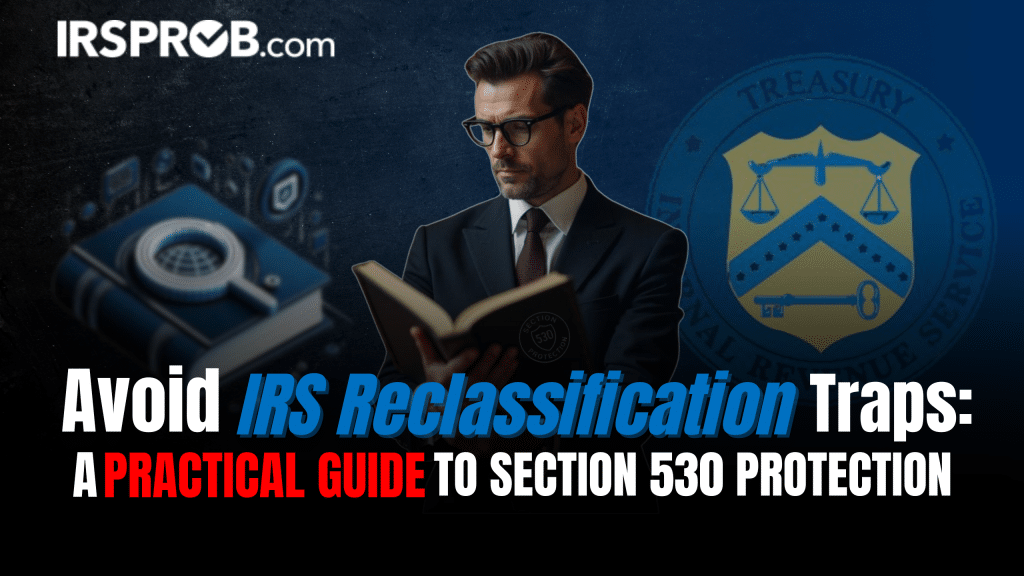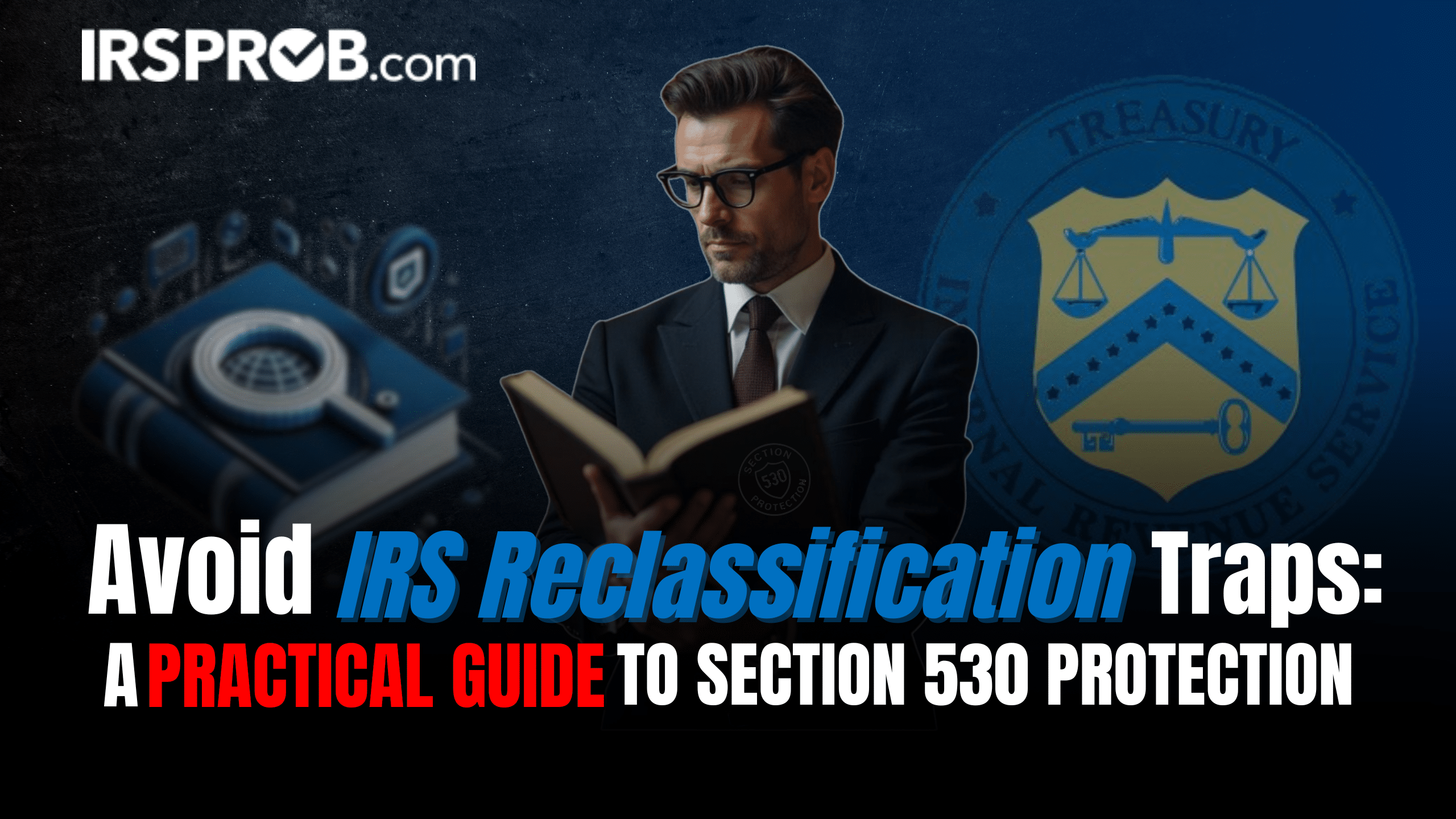Avoid IRS Reclassification Traps: A Practical Guide to Section 530 Protection

Misclassifying workers as independent contractors rather than employees can be a costly mistake for businesses. The IRS has long scrutinized employment classifications, and if your business is found to have misclassified workers, the consequences can be severe—ranging from retroactive payroll tax assessments to hefty penalties, sometimes amounting to 40% or more of your gross payroll.
Fortunately, there’s a powerful—but underutilized—protection available for businesses: Section 530 Relief of the Revenue Act of 1978. When properly applied, it can shield businesses from IRS penalties and allow them to maintain independent contractor status for a class of workers—even if the IRS believes those workers should technically be classified as employees.
But there’s a catch: qualifying for Section 530 isn’t easy—and recent IRS updates have made it even more complex.
Section 530 is a federal tax provision that provides relief from employment tax liabilities for businesses that have misclassified employees as independent contractors. If your business qualifies, the IRS cannot reclassify those workers or impose associated back taxes and penalties.
This protection, however, is not automatic. To qualify, your business must meet all three of the following criteria:
- Timely Filing of Required Forms
You must have filed all required Form 1099-NEC (or similar information returns) for the workers in question. - Consistent Worker Classification
You must have consistently treated all workers performing similar roles as independent contractors, not just a select few. - Reasonable Basis for Classification
You must be able to demonstrate a “reasonable basis” for treating the workers as independent contractors. Acceptable evidence includes:
- Reliance on judicial precedent or IRS rulings.
- A prior IRS audit where similar classifications were accepted.
- Long-standing industry practice that supports contractor status.


The IRS Just Made It Tougher
For the first time in over four decades, the IRS has issued a new revenue procedure clarifying how it will apply Section 530. This new guidance adds a significant layer of complexity—and potential vulnerability—for businesses using independent contractors.
Under the revised approach, the IRS may now consider whether you treat workers as employees for non-tax purposes, such as:
- Compliance with federal or state labor laws,
- Coverage under state unemployment insurance, or
- Inclusion under workers’ compensation insurance.
Why This Matters
Even if your intent is compliance with labor or insurance laws, the IRS may interpret those actions as inconsistent with independent contractor classification. That interpretation could jeopardize your eligibility for Section 530 relief.
The Path Forward: Proactive Documentation
With the IRS tightening its interpretation of Section 530, proactive planning is no longer optional—it’s essential.
Businesses must now document their compliance with Section 530 requirements at the time of worker classification, not in response to an audit. Waiting until the IRS knocks on your door is too late.
Here’s what your business should do:
- Review your current contractor agreements and worker roles.
- Ensure you meet all three Section 530 conditions now—not later.
- Work with your tax advisor or legal counsel to establish a strong, defensible position.
Section 530 relief remains a powerful tool for businesses that rely on independent contractors—but only if used correctly. In the face of evolving IRS scrutiny, don’t leave your compliance to chance. Evaluate your worker classification strategy now, and ensure you’re protected.
For help navigating worker classifications or to assess your eligibility for Section 530 relief, reach out to your tax professional—or schedule a consultation with our team at irsprob.com.







